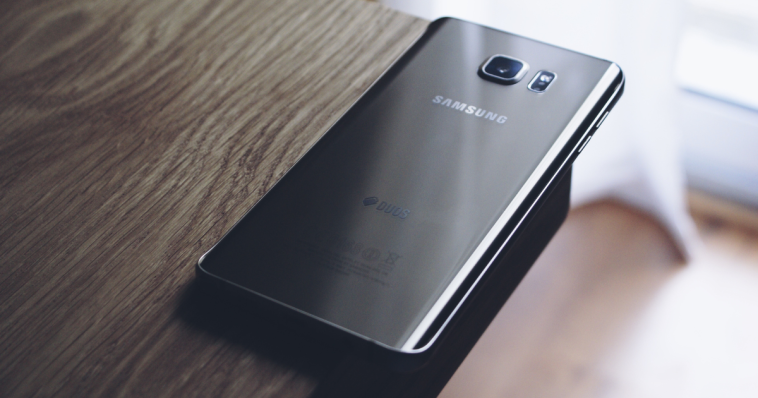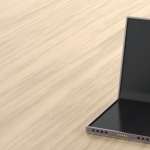Samsung didn’t become a smartphone giant overnight. It took years of innovation and strategic moves to reach the top. One of the biggest turning points in the company’s success was the launch of its flagship Galaxy S series in 2010. This lineup set the stage for Samsung’s dominance in the Android market, combining cutting-edge technology with sleek designs that kept users coming back for more.
Over the years, the Samsung Galaxy S series has evolved into one of the most successful Android smartphone lines ever. With each new release, Samsung has pushed the boundaries of mobile tech, refining performance, camera quality, and design. Let’s take a look back at the journey of the Galaxy S series and how it became a powerhouse in the smartphone industry!
Milestones in the Samsung Galaxy S Series
Samsung Galaxy S25, S25 Plus and S25 Ultra (2025)
Samsung kicked off 2025 with the Galaxy S25 series, bringing some notable upgrades while sticking to its winning formula. The lineup debuts the Snapdragon 8 Elite for Galaxy, the first 3nm chip in a Samsung phone, promising better performance and efficiency. Design-wise, all models keep a sleek, flat look and are slightly more compact than their S24 predecessors, with the Ultra model rocking a titanium build while the S25 and S25 Plus stick with Armor Aluminum.
The S25 Ultra gets a minor screen bump to 6.9 inches, while the other two flagships remain the same size. AI takes center stage, with Samsung integrating a wave of Gemini AI features, many of which will trickle down to older models. While camera hardware hasn’t changed much, the Ultra now sports a 50MP ultrawide lens, and Samsung’s new ProVisual Engine significantly improves image processing, eliminating oversharpening and boosting overall quality. The Galaxy S25 series officially launched on February 7, 2025, continuing Samsung’s push for innovation in mobile tech.
Samsung Galaxy S24, S24 Plus and S24 Ultra (2024)
The Samsung Galaxy S24 series, launched on January 31, 2024, brought a mix of refinements rather than groundbreaking changes. The biggest upgrade came to the Ultra model, which swapped its 10X periscope lens for a new 50MP 5X zoom, while AI enhancements improved hybrid 10X shots and maintained 100X Space Zoom. Samsung also introduced Galaxy AI, adding features like Circle to Search, Live Translate, and AI-powered photo edits.
Under the hood, the Snapdragon 8 Gen 3 for Galaxy boosted efficiency, and the 5,000mAh battery offered better longevity, though charging speeds stayed the same at 45W wired and 15W wireless. While the S24 and S24 Plus remained largely unchanged apart from the usual hardware refresh, the series still delivered a polished upgrade, particularly for those coming from older models.
Samsung Galaxy S23, S23 Plus and S23 Ultra (2023)
The Galaxy S23 series marked a major shift for Samsung, as it fully embraced Qualcomm’s Snapdragon chips across all regions, saying goodbye to Exynos for international models. At the heart of these phones was the Snapdragon 8 Gen 2 for Galaxy, a powerhouse of a processor that not only delivered a noticeable speed boost but also future-proofed the devices.
Beyond performance, users got a pleasant surprise with improved battery life, something that wasn’t heavily advertised but made a real difference in daily use. The camera system also saw refinements, making the S23 lineup a well-rounded upgrade. However, while US customers saw no change in pricing, international buyers weren’t as lucky, facing a noticeable price increase.
Despite this, the Galaxy S23 series proved to be one of Samsung’s most refined and polished releases to date. It didn’t reinvent the wheel, but it fine-tuned the experience in all the right ways, making it a worthy successor in the Galaxy S lineup.
Samsung Galaxy S22, S22 Plus and S22 Ultra (2022)
The Galaxy S22 series made its debut in early 2022, bringing a subtle yet meaningful shift to Samsung’s flagship lineup. The biggest change came with the S22 Ultra, which officially merged the spirit of the retired Galaxy Note series into the S lineup. With its built-in S Pen and squared-off design, it felt like a true successor to the Note rather than just another Galaxy S device.
Camera-wise, the Ultra stuck with its powerful quad-camera setup, featuring 3X and 10X zoom lenses alongside the main and ultra-wide shooters, ensuring it remained a top contender in mobile photography. Beyond the Ultra, the rest of the S22 lineup saw more gradual refinements. Samsung focused on improving camera performance and extended software support, making these phones a solid long-term investment.
Interestingly, the standard Galaxy S22 took a step in the opposite direction of the industry trend, coming in smaller than its predecessor and even packing a slightly reduced battery. While not the most groundbreaking release, the S22 series was a polished upgrade that kept Samsung at the top of the smartphone game.
Samsung Galaxy S21, S21 Plus and S21 Ultra (2021)
The Galaxy S21 series, launched in early 2021, offered three distinct models: the compact 6.2-inch S21, the larger 6.7-inch S21 Plus, and the powerhouse 6.8-inch S21 Ultra, which boasted the most advanced camera system. All three shared key features, including the Snapdragon 888 (or Exynos 2100 outside the US), 120Hz refresh rates, Android 11 with Samsung’s One UI 3.1, and 5G connectivity.
While the S21 and S21 Plus featured a familiar triple-camera setup with a main, ultra-wide, and 3X hybrid zoom lens, essentially refined versions of their S20 predecessors, the S21 Ultra stood out with its massive 108MP main sensor, an ultra-wide lens, and two telephoto cameras, offering both 3X and 10X zoom. Thanks to Samsung’s software magic, it even enabled an impressive 100X Space Zoom, making it a photography powerhouse.
Samsung Galaxy S20, S20 Plus and S20 Ultra (2020)
The Galaxy S20 series, launched in March 2020, brought major upgrades, focusing on enhanced cameras, 5G connectivity, and bigger batteries. Leading the lineup was the S20 Ultra, which introduced Samsung’s first-ever 108MP main sensor and a periscope-style telephoto lens capable of 4X optical zoom, 10X hybrid zoom, and an impressive 100X digital zoom.
Meanwhile, the standard S20 and S20 Plus featured solid camera systems but lacked the Ultra’s advanced zoom capabilities. All three models came with 5G support and packed large batteries: 5,000mAh for the Ultra, 4,500mAh for the Plus, and 4,000mAh for the base S20. Under the hood, they ran on the Snapdragon 865 (or Exynos 990 outside the US), paired with 12GB of RAM and expandable 128GB storage.
The S20 series also marked a turning point for Samsung, as it was the first time the company removed the beloved 3.5mm headphone jack from its flagship lineup.
Samsung Galaxy S10e, S10 and S10 Plus (2019)
In 2019, Samsung shook things up by launching three flagship models in the Galaxy S10 series: the standard Galaxy S10, the larger S10 Plus, and the ultra-compact S10e, designed for those who preferred a smaller, one-handed device. These phones introduced the punch-hole display, slimming down bezels for a more immersive look.
Powered by the Snapdragon 855 with 128GB of base storage, they also retained features that were disappearing from other flagships, like the 3.5mm headphone jack and microSD card slot. The S10 and S10 Plus debuted a versatile triple-camera system with ultra-wide, wide, and telephoto lenses, while the compact S10e skipped the telephoto sensor. Released on March 8, 2019, the S10 series delivered a great balance of innovation and practicality.
Samsung Galaxy S9 and S9 Plus (2018)
The Galaxy S9 and S9 Plus, released in 2018, focused on refining the smartphone experience rather than reinventing it. The biggest highlight was the improved camera system, featuring a dual-aperture lens that adapted to lighting conditions for better low-light shots. Under the hood, the S9 series packed serious power with the Snapdragon 845 (or Samsung’s Exynos 9810 in global markets).
The S9 came with 4GB of RAM, while the S9 Plus got a boost to 6GB, ensuring smooth performance. Storage started at 64GB, with the flexibility of microSD expansion something Samsung fans appreciated. Samsung also listened to user feedback and made a much-needed change to the fingerprint sensor placement. The Galaxy S8 had an awkwardly positioned scanner next to the camera, leading to smudged lenses and frustration.
With the S9, Samsung moved it below the camera, making it far more accessible and user-friendly. While the S9 series wasn’t a radical leap forward, it was a well-polished upgrade that addressed key issues and refined the flagship experience. Released on March 16, 2018, it remains a solid chapter in Samsung’s smartphone evolution.
Samsung Galaxy S8 and S8 Plus (2017)
The Galaxy S8 series followed the wildly successful S7 lineup, bringing a sleek new design that emphasized slimmer bezels and a more immersive display. Samsung made a major change by moving the fingerprint sensor from the front to the back, a shift that wasn’t universally loved—especially since it was placed right next to the camera, leading to plenty of accidental smudges. Despite this, the Galaxy S8 and S8 Plus felt like a step forward in terms of aesthetics, with their curved Infinity Displays setting a new standard for flagship design.
These were also the first Samsung phones to introduce Bixby, the company’s in-house voice assistant, which unfortunately never quite caught on and often felt more like a forced feature than a helpful addition. On the performance side, the Galaxy S8 series packed the latest Snapdragon 835 processor in the U.S., while international models ran on Samsung’s Exynos 8895. While not a revolutionary upgrade, the S8 series refined the Galaxy experience, setting the stage for future flagship innovations.
The Samsung Galaxy S series has evolved significantly since its debut in 2010, consistently pushing the boundaries of mobile technology. With each new generation, Samsung introduces innovations like slimmer bezels, punch-hole displays, powerful camera systems, and AI-driven features. The integration of Note-like features into Ultra models, the adoption of Snapdragon chips globally, and the increasing role of AI highlight Samsung’s leadership in the smartphone industry.
The Galaxy S series continues to set the standard for premium Android devices, focusing on performance, battery life, and software improvements. Samsung’s commitment to delivering top-tier smartphones ensures that the Galaxy S lineup meets user needs with cutting-edge processors, enhanced camera technology, and advanced AI tools.




